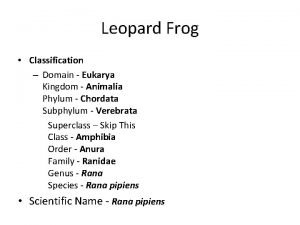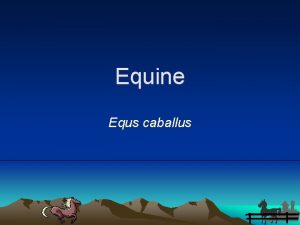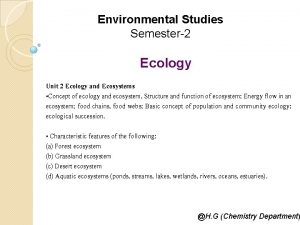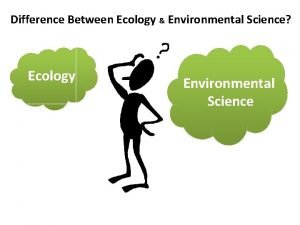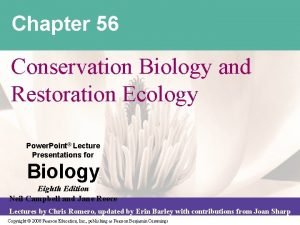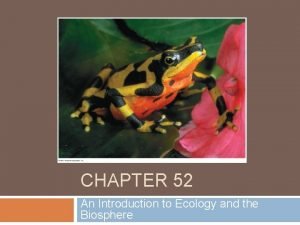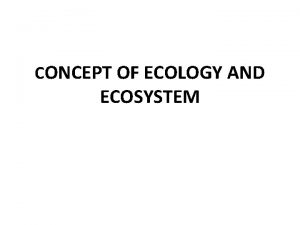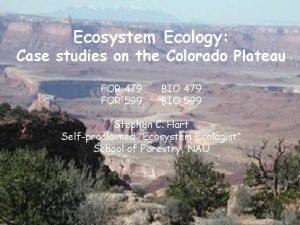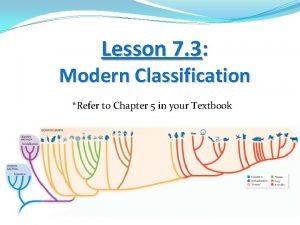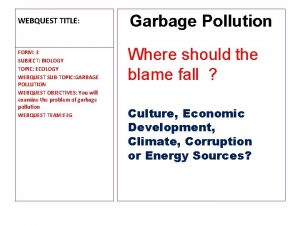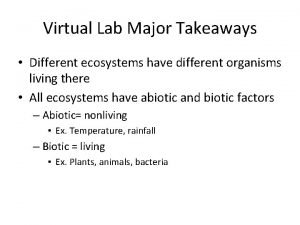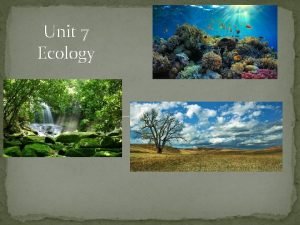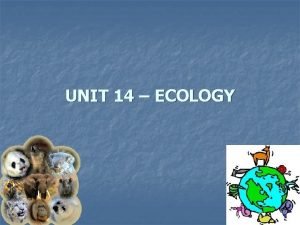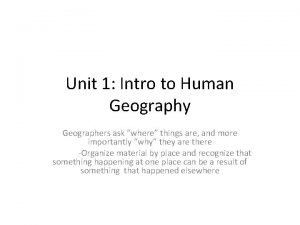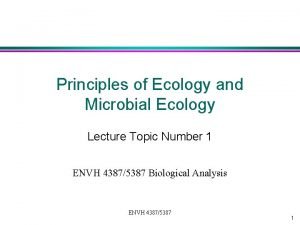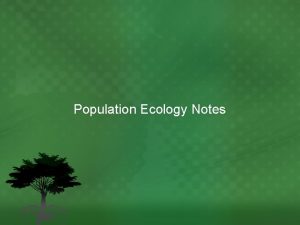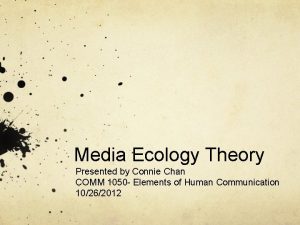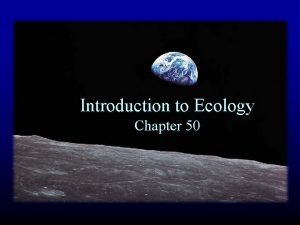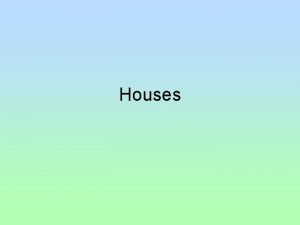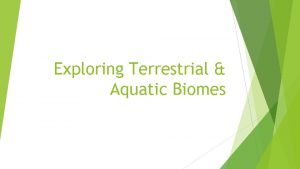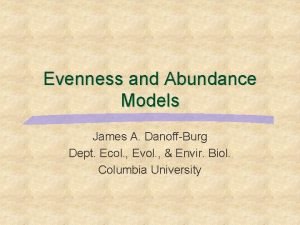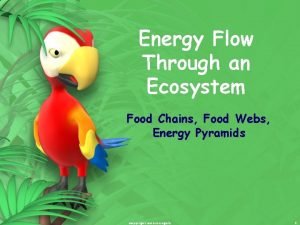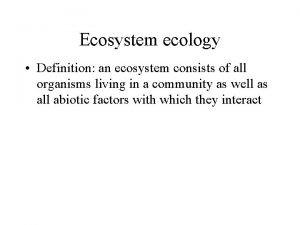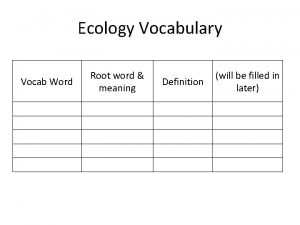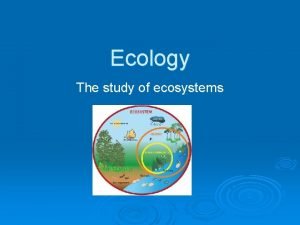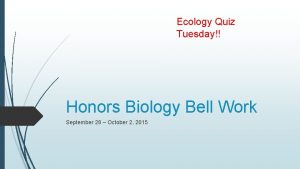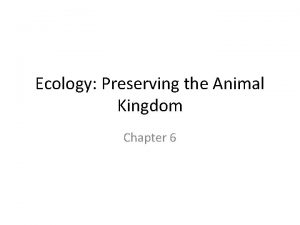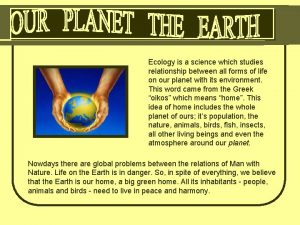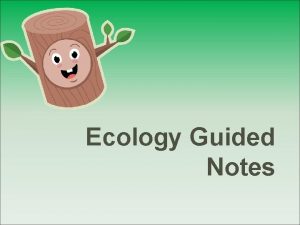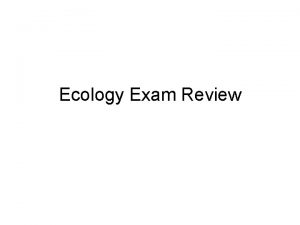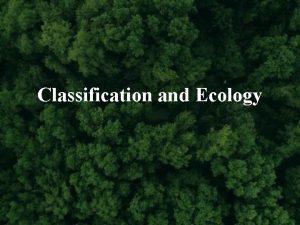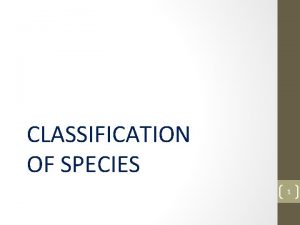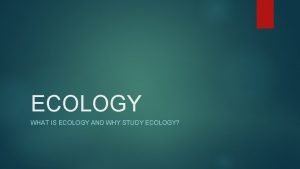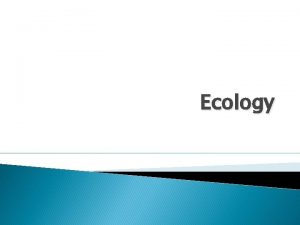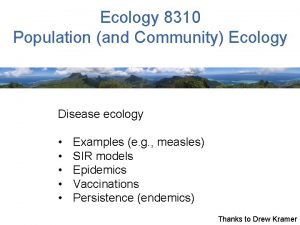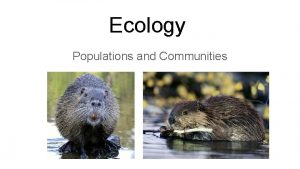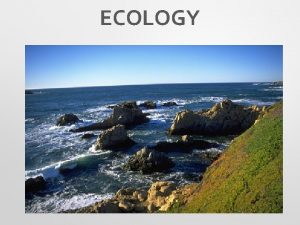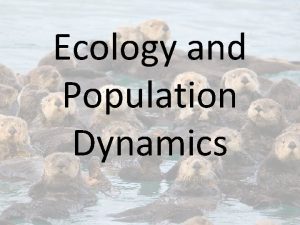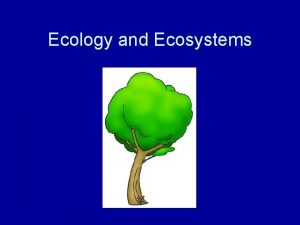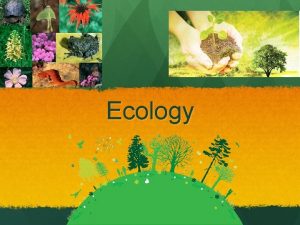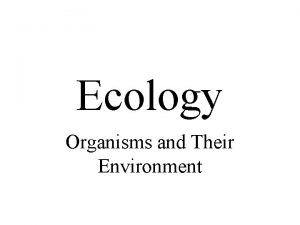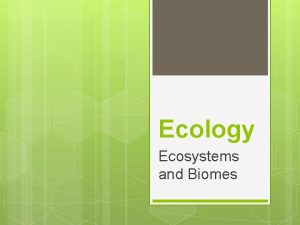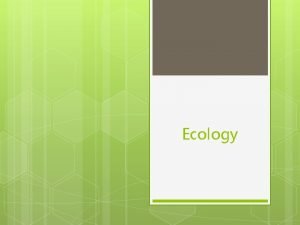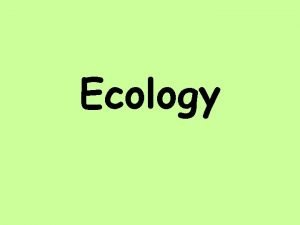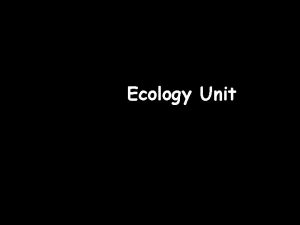Classification and Ecology What is a Species Species






















































- Slides: 54

Classification and Ecology

What is a Species? • Species – Distinct form of life – Creates much diversity or variety within life • Biological Species concept – defines species as a population or group of populations whose members have the ability • to reproduce

Micro and Macro Evolution • Microevolution – changes or mutations within the genes of a population • Macroevolution – major biological changes evident in the fossil record – Ex. Extinction of a species, new features like wings – https: //www. ted. com/talks/prosanta_chakra barty_clues_to_prehistoric_times_found_in _blind_cavefish

Reproductive Barriers Between Species • Reproductive Isolation – condition in which a reproductive barrier keeps two species from interbreeding – Timing – Different breeding seasons – Behavior – Different courtship or mating behaviors – Habitat – Adapted to different habitats in the same general location – Physical differences – reproductive structures are physically incompatible – Fertility – unable to reproduce

Geographic Isolation and Speciation • Geographic Isolation – separation of populations as a result of geographic change or migration to geographically isolated places – Ex. Mountain forms, glacier movement • This can lead to new evolutionary developments and then new species • Speciation – formation of a new species

Geographic Isolation and Speciation

Modern Taxonomy • Taxonomy – branch of biology that deals with identifying, classifying, and naming species • Classification – organizing species into larger groups of related species

Modern Taxonomy • Carolus Linnaeus – Binomial Nomenclature – two part naming system • Genus and species name • Ex: Domesticated dogs Genus: Canis Species: familiaris Wolves Genus: Canis Species: lupus

7 Levels of Classification • • 1. kingdom 2. phylum 3. class 4. order 5. family 6. genus 7. species – When moving down this list, organisms in each classification level are more closely related

The Three Domains of Life • Domain – Broadest category of classification – Archaea, Bacteria, Eukarya • Kingdoms – category of classification after domains – 4 kingdoms within Eukarya domain • Animals, Plants, Fungi, Protists – 1 kingdom within Archaea domain • Archaebacteria – 1 kingdom within the Bacteria domain • Eubacteria

Ecology • Ecology – from Greek oikos ‘house’ • the study of interactions among organisms and between organisms and environment (Haeckel, 1866) • Interdependence – dependence between or among individuals or things

Levels of Organization 1. Biosphere – largest level, our entire planet - portions of planet where life exists (land, H 2 O, air) – 8 km above to 11 km below

Levels of Organization 2. Biome – group of ecosystems that share similar climates (temp. and rainfall) 3. https: //www. yo utube. com/watc h? v=iz. Rv. Pa. A Wgyw

Levels of Organization 3. Ecosystem – collection of all organisms in a particular place together with the abiotic (physical) environment.

Levels of Organization 4. Community – groups of different populations that live together in a defined area. 5. Population – groups of individuals of same species that live in same area. 6. Species – group of organisms that can breed and produce fertile offspring.

Levels of Organization


Biotic and Abiotic Factors • Biotic – living part of the environment – Plants, Animals , Mold, Fungi, Bacteria, Protist • Abiotic – Nonliving part of the environment – Sunlight, heat, soil, wind, water, temperature • Environment – all conditions or factors surrounding an organism; includes both biotic and abiotic factors.

Energy, Producers, and Consumers At the core of every organism’s interaction with the environment is its need for ENERGY to power life’s processes

Producers (Autotrophs) • Can trap energy to produce food • Use solar or chemical energy to produce food by assembling inorganic compounds into complex organic molecules – Plants – Some protist – Some bacteria

Primary Producers • Photosynthesis – captures solar energy and converts it to chemical energy sunlight 6 CO 2 + 6 H 2 O C 6 H 12 O 6 + 6 O 2 • Chemosynthesis – Chemical energy used to produce carbohydrates – bacteria in harsh environments – deep sea volcanic vents or hot springs

Consumers (Heterotrophs) • Can’t trap energy directly; must acquire it from other organisms – Herbivores – eat plant leaves, roots, seed or fruits (cow, catepillar, deer) – Carnivores – eat other animals (snakes, dogs cats) – Omnivores – eat both plant and animal (human, bear, pigs)

Consumers (Heterotrophs) • Scavengers – consume carcasses of other animals (vultures and hyenas) • Decomposers – break down organic matter (bacteria and fungi) – produces detritus (small pieces of dead and decaying plant and animal remains) • Detritivores – feed on detritus (earthworms and many types of snails, mites, shrimp, crabs)

3. 3 Energy Flow in Ecosystems § Food Chains § Food Webs How Ecosystems Work (3: 23)

Food Chains and Food Webs SUN Autotrophs Heterotroph 1. Food Chain – energy trapped by producers passed on when organisms eat and are eaten 2. Food Web – relationship more complex than a chain

Food Web Activity

Trophic Levels and Ecological Pyramids • Trophic Levels – each step in a food chain/web Ex: producers, then consumers • Ecological Pyramids – shows relative amount of energy at each trophic level of a food chain or web. • Biomass – total amount of living tissue within a trophic level

3. 4 Cycles of Matter *Recycle Matter*

Carbon Cycle • Photosynthesis – uses CO 2 from atmosphere – Happens in the CHLOROPLAST 6 CO 2 + 6 H 2 O C 6 H 12 O 6 + 6 O 2 • Respiration – returns CO 2 to atmosphere – Happens in the MITOCHONDRIA C 6 H 12 O 6 + O 2 H 2 O + CO 2

Carbon Cycle

The Carbon Cycle 1. Volcanoes, respiration, fossil fuels, and decomposition add CO 2 to atmosphere. • • Organic carbon is locked deep beneath the Earth’s surface – high pressure converts layers of sediment (dead organisms and waste) to carbon-rich fossil fuels. Fossil fuels are extracted and processed to make gasoline and oil –burning fossil fuels release CO 2 2. Plants take CO 2 and make carbohydrates - glucose (C 6 H 12 O 6). 3. Plants are eaten by animals and carbohydrates are passed through the food chain. 4. As the animal breathes and eventually dies and decomposes, CO 2 is returned to the atmosphere.

Carbon Cycling

Water Cycle

Water Cycle 1. Water enters the atmosphere by: • • Evaporation – water changes from a liquid to a gas Transpiration – Evaporation through leaves 2. As water rises it cools condenses into tiny droplets that form clouds. 3. Droplets returns to Earth as precipitation. 4. Water enters the rivers, ground water, ocean or plant roots to restart cycle.

Nitrogen Cycle

Nitrogen. Cycle 1. Nitrogen gas makes up 78% of atmosphere 2. Nitrogen Fixation: bacteria take nitrogen gases and turn it into ammonia, nitrite, and nitrate. 3. Plants and animals use nitrate to make amino acids. 4. Animal dies and decomposes returning nitrates to the soil. 5. Denitrification: other bacteria convert nitrates into nitrogen gas.


The Phosphorus Cycle

The Phosphorus Cycle • Phosphate – parts of DNA/RNA • Found in rocks that are worn down • Washes into rivers/streams/oceans for marine organisms • Taken in by plants and turned into organic compounds

Nutrient Limitation • Primary Productivity – the rate at which organic molecules are created by producers • If nutrients are in short supply, they are called LIMITING NUTRIENTS Ex: Nitrogen is often limiting in water; if there is suddenly as input of N (fertilizer runoff), organisms can grow rapidly (Algal Bloom)

Chapter 4: Ecosystems and Communities 4 -1 The Role of Climate

Climate • Climate: long-term, over entire biome area – Weather: short-term, local • Greenhouse Effect – It’s a good thing! – CO 2, H 2 O, CH 4 all trap heat and hold it next to the surface – Keeps the temperature suitable for life Video Clip 1 Video Clip 2

The Effect of Latitude on Climate • Earth has 3 climate zones due to unequal heating because of the angle of the sun – Polar – Temperate – Tropical

Heat Transport • Ocean and wind currents help produce Earth’s climates • They are affected by land masses and Earth’s rotation

4 -2 Niches and Community Interactions

The Niche • Niche – where and how something lives; the way the species obtains what it needs to survive and reproduce – Habitat is the general place where an organism live (address) – Niche is the organism’s how it interacts with biotic and abiotic factors (occupation)

Community Interactions 1. Competition • Organisms compete for resources Ex: Food, Mates, Shelter • Competitive Exclusion Principle – no 2 organisms occupy exactly the same niche in exactly the same habitat at exactly the same time. • winner and a loser 2. Predation • One organism (predator) captures and feeds on another (prey).

Community Interactions 3. • Symbiosis Mutualism – both species benefit Ex: Flowers & insects, Clown Fish & Sea Anemone, Egrets & Alligators • Commensalism – one benefits, the other is not helped nor harmed Ex: Barnacle (gets food) & Whale • Parasitism – one benefits, other is harmed Ex: tapeworms, fleas, ticks, lice

Examples of Symbiosis 5 min video Bed bugs Aphid – destructive insect pests Grey shark with pilot fish

4. 3 Ecological Succession - change in an ecosystem 1. Primary Succession – no remnants of an older community (volcanic eruption, glacier erosion = reveals bare rock) o 1 st species to colonize barren areas are called “pioneer species” o Ex: algae, fungi, lichens - composite, symbiotic organisms 2. Secondary Succession – disturbance affects the community soil exists (flood, hurricane, wild fires, clear cutting, plowed for farming) 3. Climax Community – fairly stable, dominant community established after succession.


Intro to Biomes 4 -4 Land Biomes

Biomes based on Precipitation and Temperature

Videos on Biomes • Terrestrial Biomes: Deserts, Grasslands, and Forests (3: 39) • Savanahs (2: 36)
 Keystone species definition biology
Keystone species definition biology Keystone species definition biology
Keystone species definition biology Horse taxonomy domain
Horse taxonomy domain Leopard phylum
Leopard phylum Horse classification kingdom
Horse classification kingdom Cow taxonomy
Cow taxonomy Manifold tabulation
Manifold tabulation Mind map about media and information literacy
Mind map about media and information literacy Chapter 52: an introduction to ecology and the biosphere
Chapter 52: an introduction to ecology and the biosphere Difference between ecosystem and ecology
Difference between ecosystem and ecology Difference of ecology and environmental science
Difference of ecology and environmental science Chapter 56 conservation biology and restoration ecology
Chapter 56 conservation biology and restoration ecology Chapter 55 ecosystems and restoration ecology
Chapter 55 ecosystems and restoration ecology Chaparral climograph
Chaparral climograph Evolution and community ecology guided notes
Evolution and community ecology guided notes Difference between ecosystem and ecology
Difference between ecosystem and ecology Chapter 55 ecosystems and restoration ecology
Chapter 55 ecosystems and restoration ecology Chapter 5 evolution and community ecology
Chapter 5 evolution and community ecology Ecosystems interactions
Ecosystems interactions Principles of ecology chapter 2
Principles of ecology chapter 2 Section 1 organisms and their relationships
Section 1 organisms and their relationships Ecology and ecosystem
Ecology and ecosystem Undesired change in air water soil
Undesired change in air water soil Eager classification versus lazy classification
Eager classification versus lazy classification Traditional classification vs modern classification
Traditional classification vs modern classification Ecology webquest answers
Ecology webquest answers Food chain virtual lab
Food chain virtual lab Unit 7 ecology answer key
Unit 7 ecology answer key Parasitism
Parasitism Difference between formal and functional region
Difference between formal and functional region Sustainability definition ap human geography
Sustainability definition ap human geography Ernst haeckel ecology
Ernst haeckel ecology Ecology deals with
Ecology deals with What is a niche in biology
What is a niche in biology Population ecology example
Population ecology example Biotic potential definition
Biotic potential definition Exponential population growth
Exponential population growth Media ecology theory
Media ecology theory Organismal ecology
Organismal ecology Folk ecology
Folk ecology Organismal ecology
Organismal ecology Organismal ecology
Organismal ecology James danoff-burg
James danoff-burg Primary consumer ecology
Primary consumer ecology Ecosystem ecology definition
Ecosystem ecology definition Decomposer root word
Decomposer root word Ecology definition
Ecology definition Ecosystem level of organization
Ecosystem level of organization Ecology study guide
Ecology study guide Honors biology ecology test
Honors biology ecology test Ecology preserving the animal kingdom
Ecology preserving the animal kingdom Organisms ecology
Organisms ecology Ecology is a science which studies the relationship between
Ecology is a science which studies the relationship between Ecology guided notes
Ecology guided notes Which phrase best describes the focus of ecology? *
Which phrase best describes the focus of ecology? *



